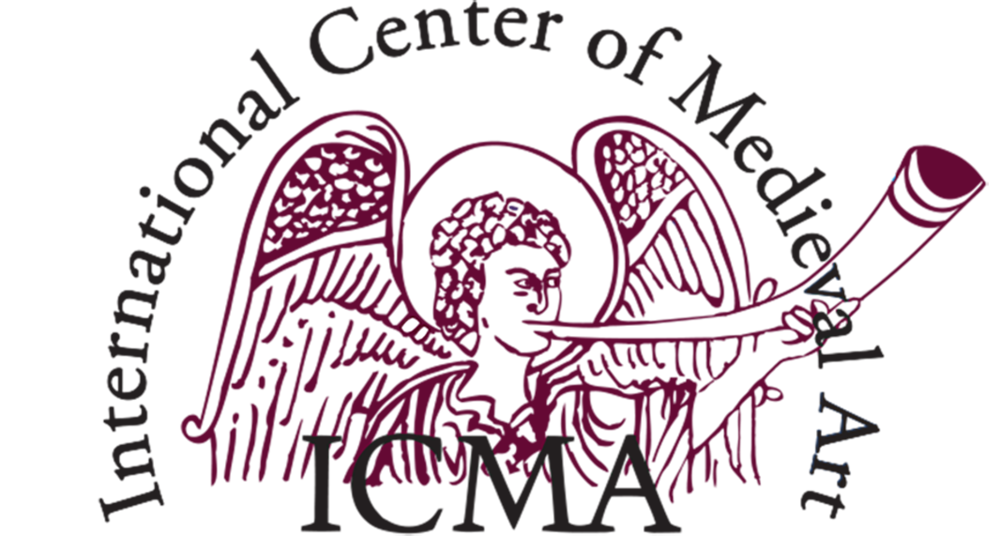POSTGRADUATE MEDIEVAL SYMPOSIUM 2023
MONDAY 22ND MAY 2023, 09:00AM -18:30PM BST
THE COURTAULD INSTITUTE OF ART, LONDON
LECTURE THEATRE 2, VERNON SQUARE CAMPUS
Flemish, Southern Netherlands The Holy Family, ca. 1500 Flemish, Southern Netherlands, Wool, silk, and gilt- and silvered-metal-strip-wrapped silk in slit, dovetailed, and interlocking tapestry weave with supplementary brocading wefts (in sewing basket, Joseph’s coat, and hem of Mary’s cloak); 40 9/16 x 46 15/16 in. (103.1 x 119.2 cm) The Metropolitan Museum of Art, New York, Robert Lehman Collection, 1975 (1975.1.1913) http://www.metmuseum.org/Collections/search-the-collections/459954
During the Middle Ages and Renaissance, textiles wrapped up and coated walls, people, furniture, and objects. They provided omnipresent, and often complex, symbolic and visual demarcations of spaces. Diplicare, the root of display, is in unfolding: so much of the frameworks of how we surround ourselves are rooted in practices using cloth. The value of these textiles, both in their materiality and craftsmanship, exceeded that of many other artforms which have been privileged by scholars. Textiles were often disregarded in art historical study, considered to be visually unappealing or discredited in previous centuries as part of the decorative arts. In addition, only a fraction of the textiles that functioned in these spaces survive, many of which are in a fragmented state.
In recent years, textiles have received more attention in art historical studies, and block buster exhibitions on tapestries have made the importance of textiles clear to a wider public. There are, however, still many new angles from which we can interrogate and discuss textiles which can enrich, connect, and reframe not only textile history but wider research subjects in Medieval and Renaissance studies.
In this symposium we would like to draw together varying angles of research through their intersections with textiles, in whatever capacity. The theme of this symposium centres on how Medieval and Renaissance textiles, real and depicted, combine, overlap or intersect in different ways. In short, it aims to interrogate how textiles get entangled with other people, arts, materials, objects and functions.
Organised by Jessica Gasson (The Courtauld) and Julia van Zandvoort (The Courtauld). Generously supported by Sam Fogg.
Programme
9.00 – Opening remarks
Secular Textiles
9.15 – 10:40 Panel 1 – Networks and trade /collecting of textiles
Key Note Samuel Cohn
Textiles, Piety, and Memory in Late Medieval Tuscany
Julia van Zandvoort
‘Per la gran furia di compratori’: Obtaining Flemish Tapestries in Sixteenth-century Italy, the case of the Van der Molen firm (1538-1544)
Nina Reiss – Trojan War tapestries (production / trade)
The ‘intersecting geographies’ of the tapestries of the Trojan War – tapestry
production between Paris and Tournai
10.40-11.00 Panel discussion
11.00-11.30 Tea Break
11:35 – 13:00 Panel 2 – Textiles in secular settings
Chiara Stombellini
(Re-)Weaving Ritual Paths: Silk Textiles as Markers of Ceremonial Space in Late Medieval Venice
Pauline Devriese
The stink of the cities – secondary scenting of domestic textiles in Europe
Karina Pawlow
Textile and glass interweaved. Entanglements of two arts in Renaissance Venice
13.00-13.20 Panel discussion
13.20-14.20 Lunch break
Religious Textiles
14:25 – 15:50 Panel 3 – Textiles and ritual function / iconography
Jessica Gasson
Tapestries on the altar: exploring the design and use of the Louvre Virign of the Living Water and the Sens Three Coronation tapestries
Julie Glodt
Overlapping Incarnation and Consecration Textiles, Images and Gestures around the Cluny Museum’s Corporal Case (13th century)
Aimee Clark
“The Garden of the Incarnation and the Conversion of the Heart: The Mass of Saint Gregory”
15.50-16.10 Panel discussion
16.10-16.30 Coffee break
16:35 – 17:55 Panel 4 – Reassembling Religious Textiles
Mireia Castano Martine
Fragmentation and reconstruction of an embroidered altar frontal
Jeroen Reyniers
Many layers of textiles. The relic treasure of Herkenrode in Hasselt (Belgium) revealed through material technical research
Jordan Quill
At the Intersection of Political and Ritual functions of textiles: Sensory Experiences of Textiles in the Sumtsek at Alchi, Ladakh
17.55-18.15 Panel discussion
18.15-18.25 Closing remarks
18.30 Wine reception

